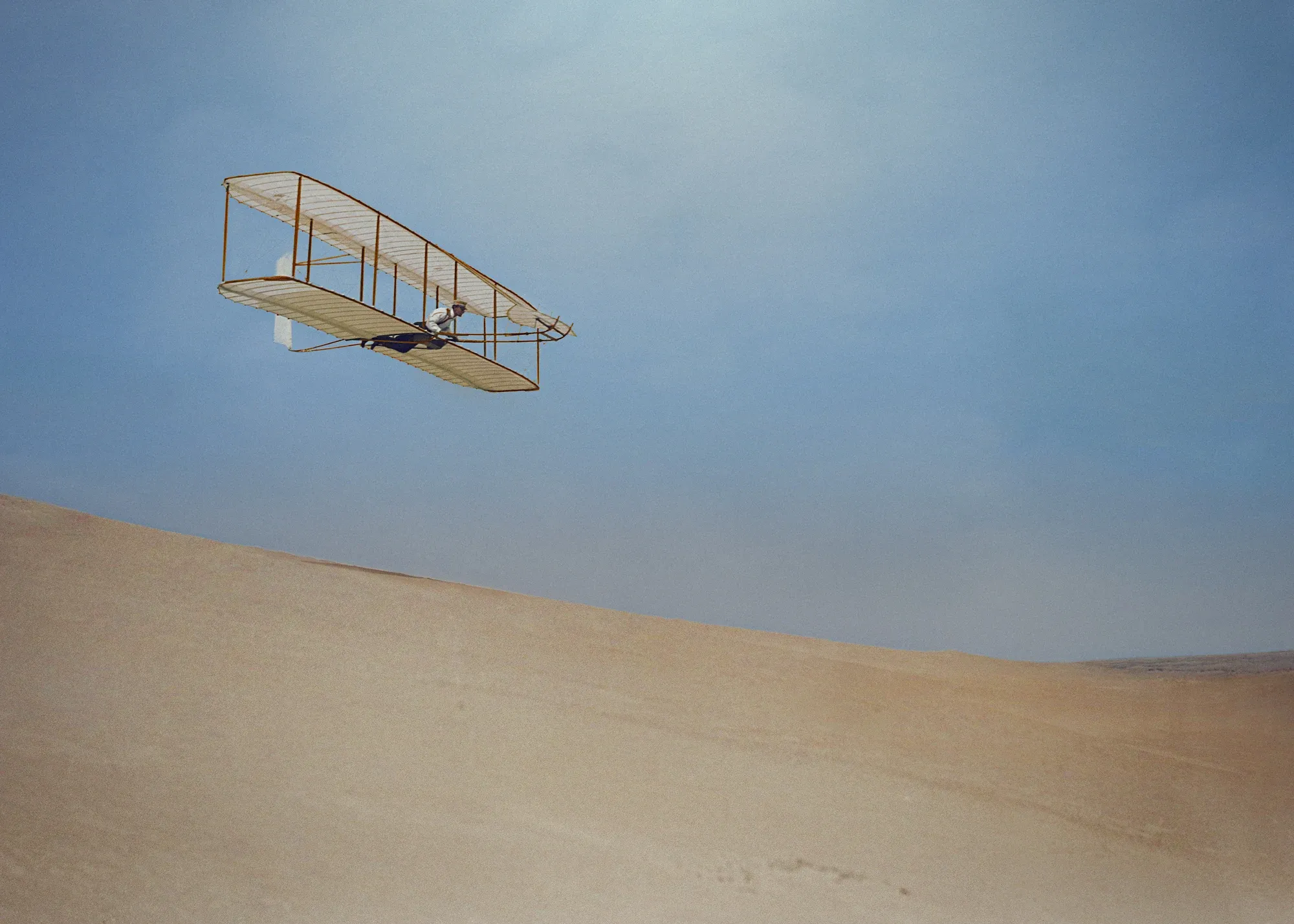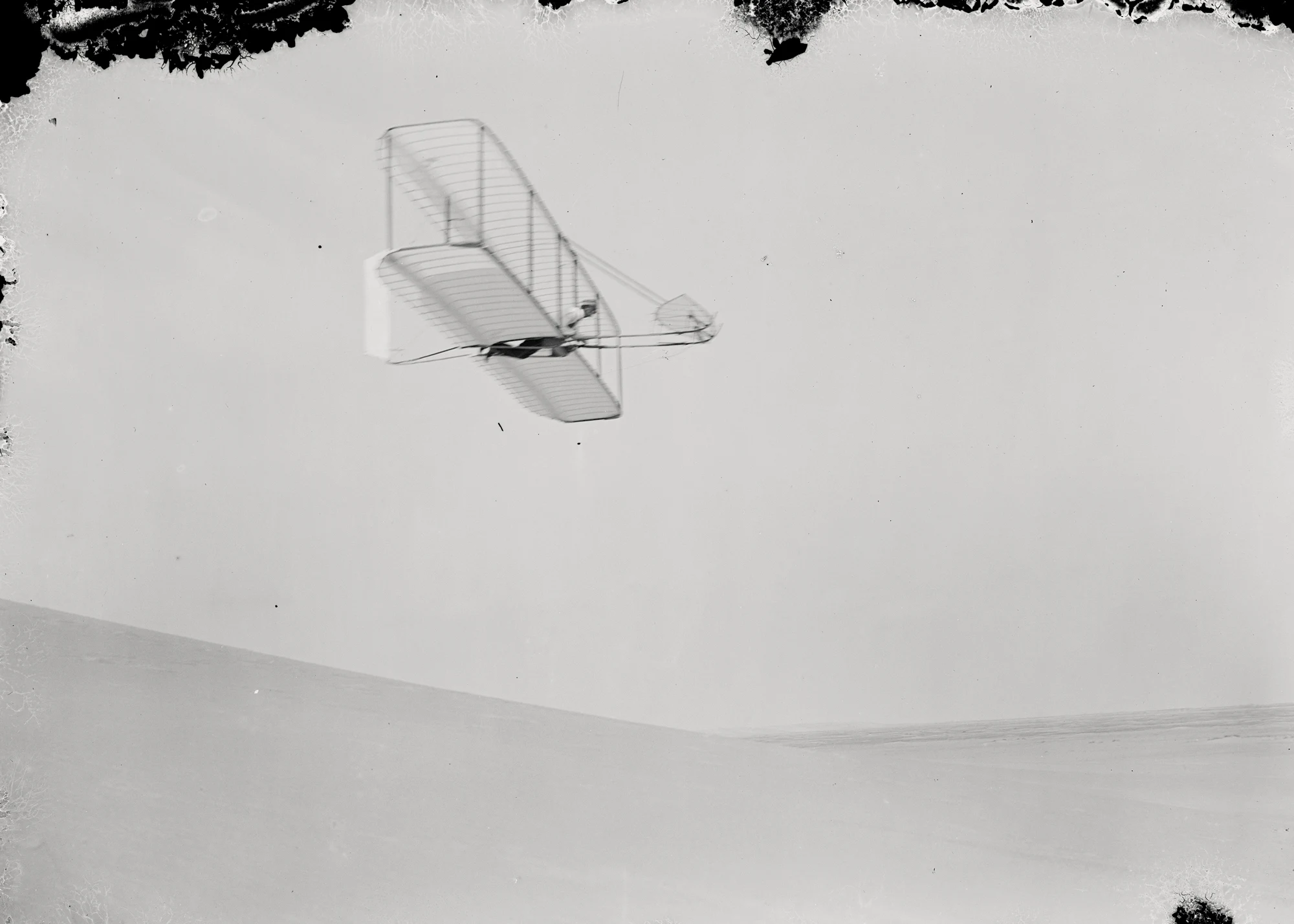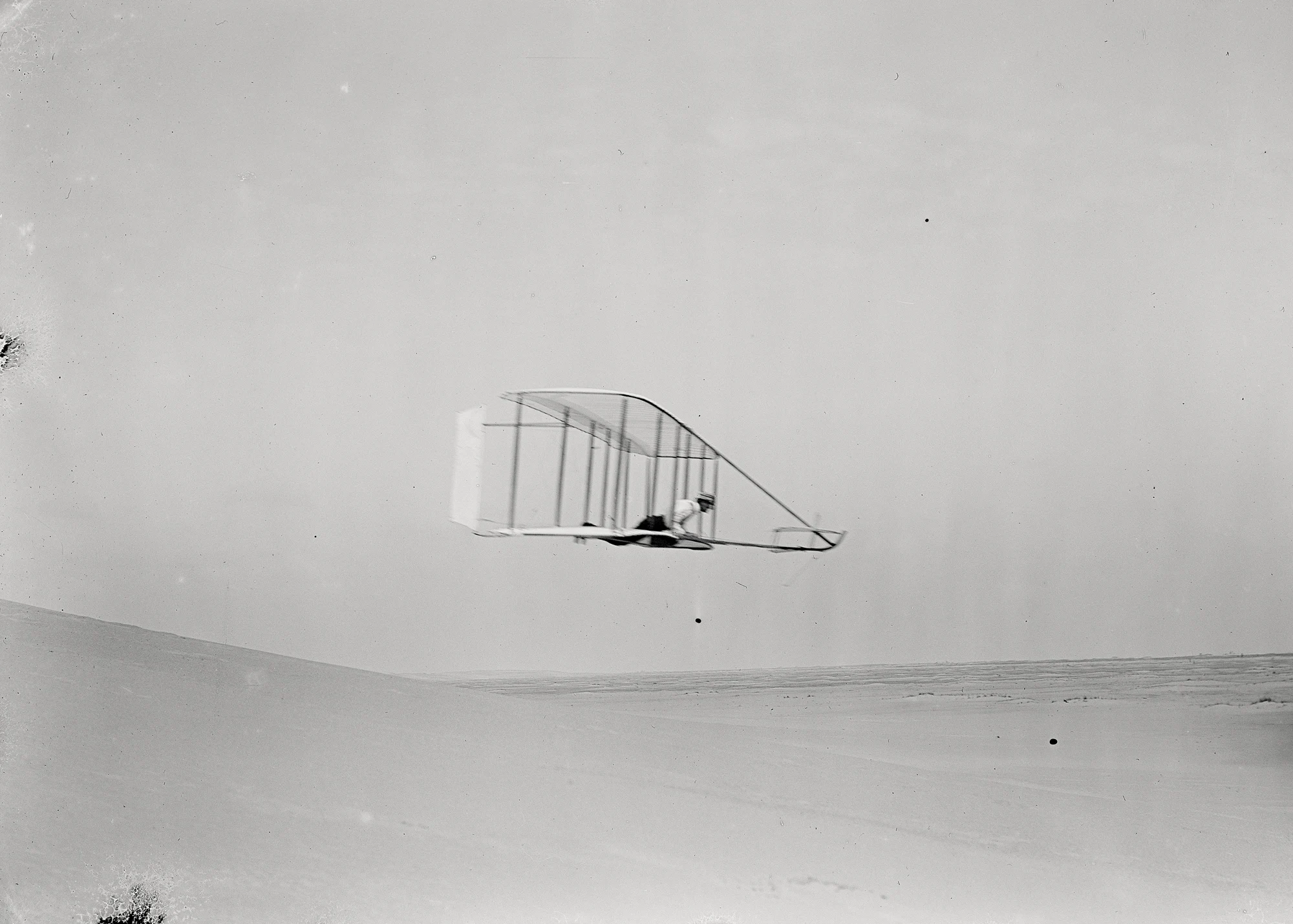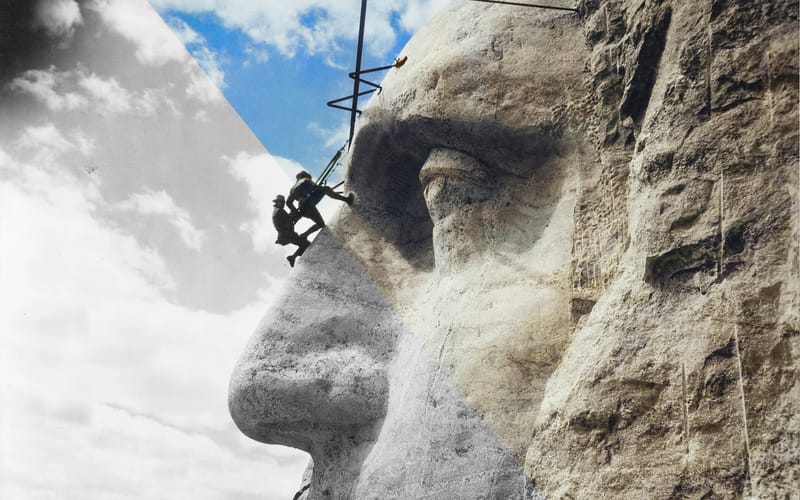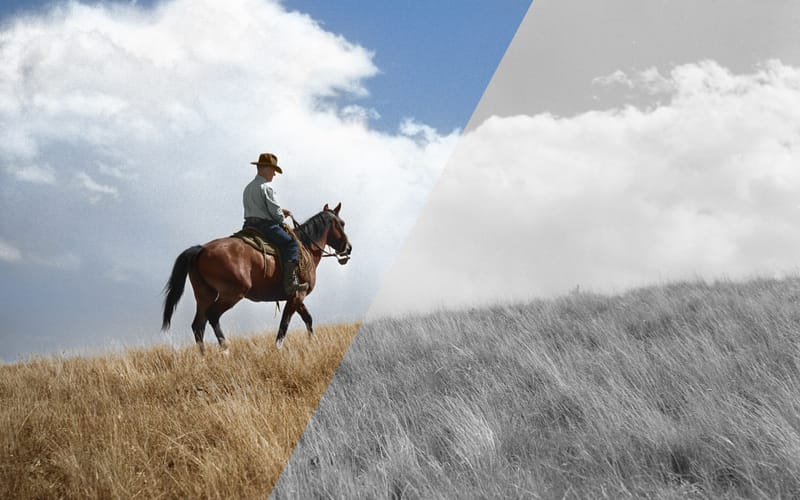Gliding Over Kill Devil Hills, 1902
10 October 1902
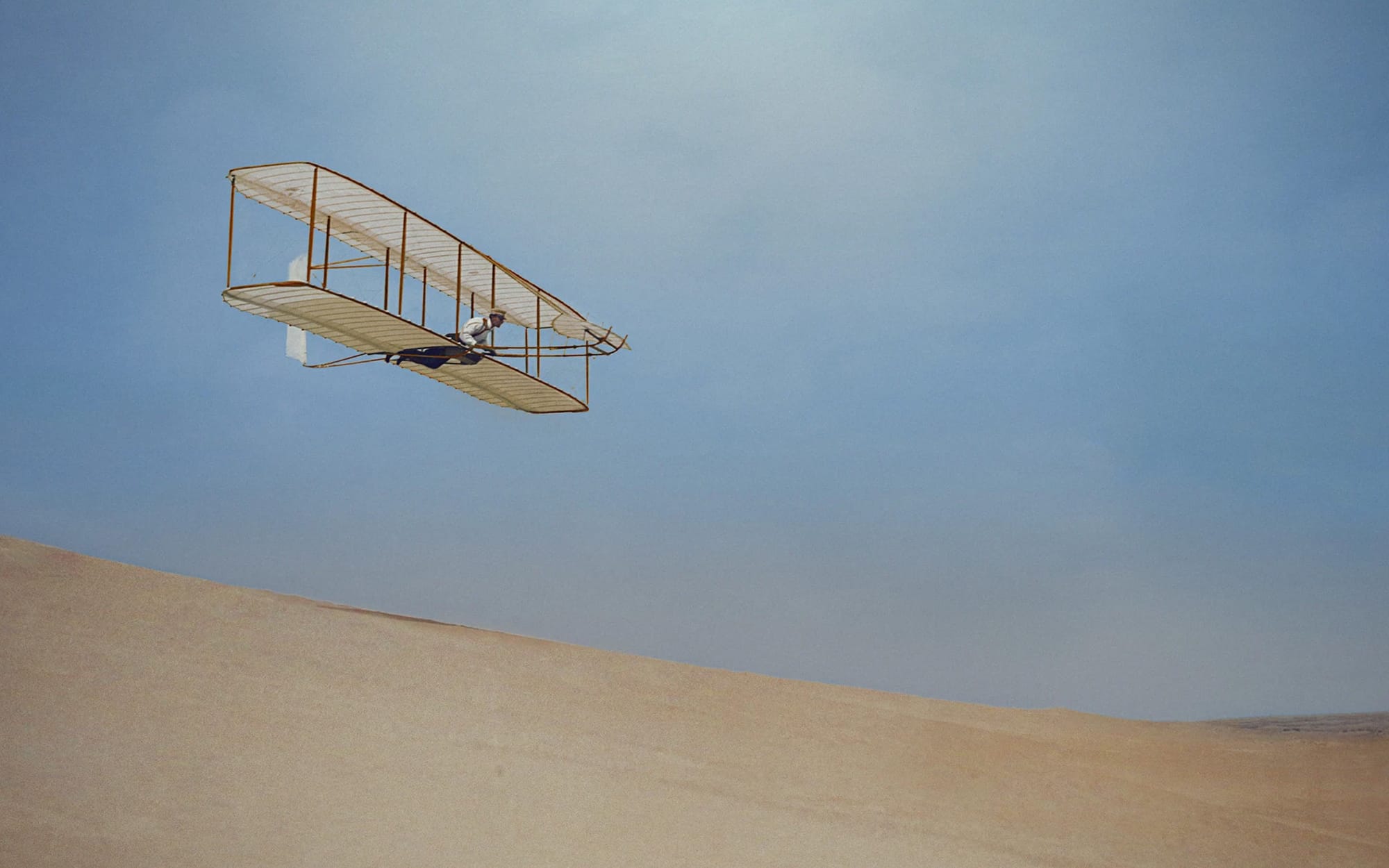
On this day 122 years ago the Wright Brothers, Wilbur and Orville, were having great success with their experiments in flight near Kitty Hawk Bay on the Outer Banks.

For several years the brothers had been developing and testing their biplane kite (Wilbur was originally the flyer while Orville photographed the tests). Before 1902 their successes had been qualified by frustrations but their experiments on the North Carolina coast had value. By the late summer of 1902 Wilbur and Orville had arrived at a much better understanding of wing design and aeronautics.
The Kitty Hawk trials provided the brothers with an opportunity to refine their equipment still further. The 1902 glider had already been enhanced with a fixed tail wing. This, however, was very nearly destroyed along with everything else on 23 September when Orville crashed badly. Much of the next week was lost to repairs as the late summer gave way to early autumn.
While the brothers were encouraged by their progress, one problem continued to trouble them. The glider remained unstable in crosswinds and it was liable to crash when they attempted any steep banked turns.
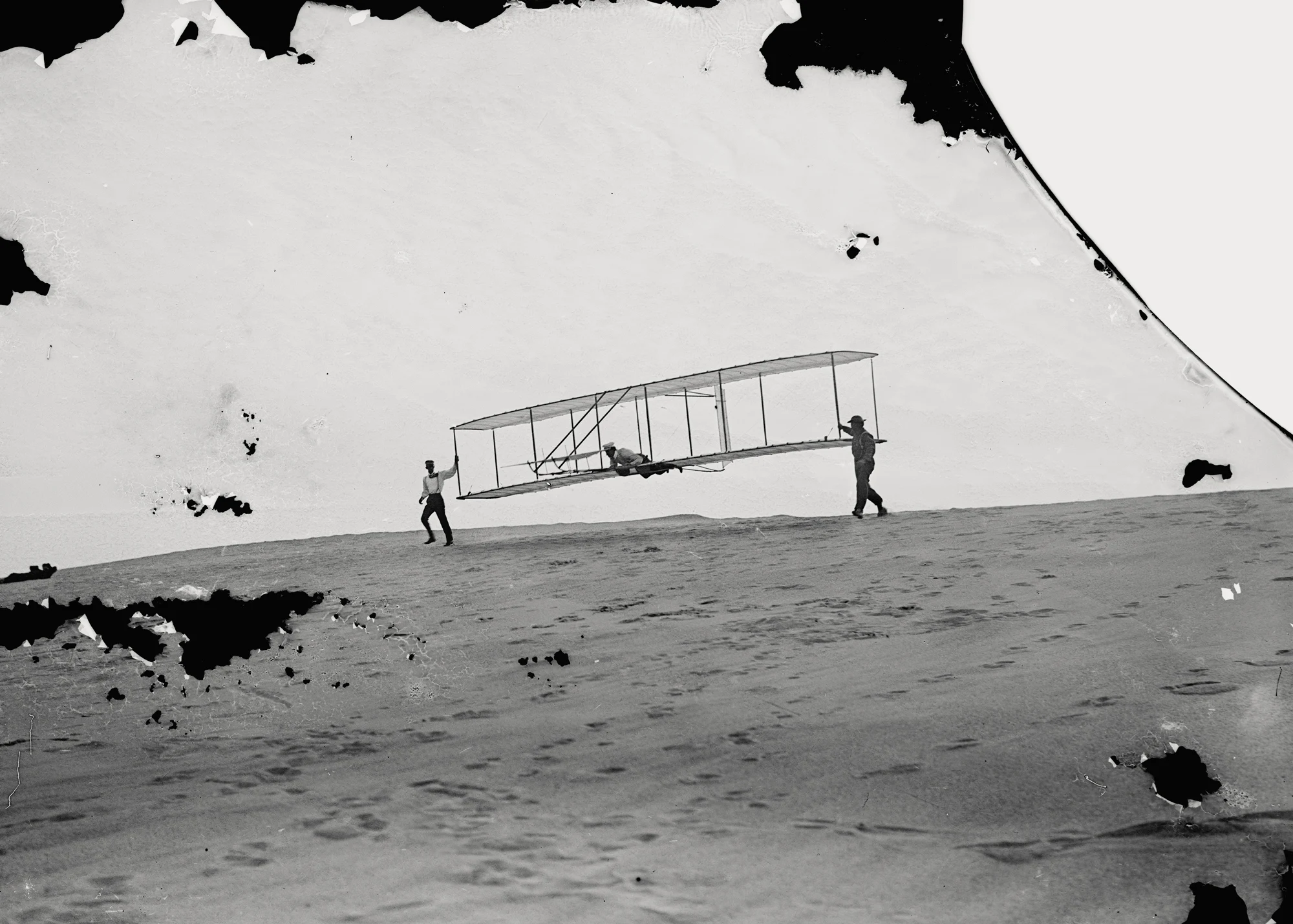
In early October Orville was puzzling over this particular problem. He suggested to Wilbur that they replace the fixed tail wing with a moveable rudder. This innovation can be seen, less than a week after its first appearance, on the colourised image above.
The rudder turned out to be a significant technological breakthrough. In tests on 9 October 1902 the brothers found that they could control the glider with far more precision than ever before.
The photographs in this set were taken the following day, on 10 October 1902. They capture a moment of high excitement as Wilber Wright pilots the glider, at an altitude of just a few feet, over Kill Devil Hills.
The brothers’ experiments would eventually lead to the first powered, controlled, sustained airplane flight in history, just over a year later, on 17 December 1903 ■
